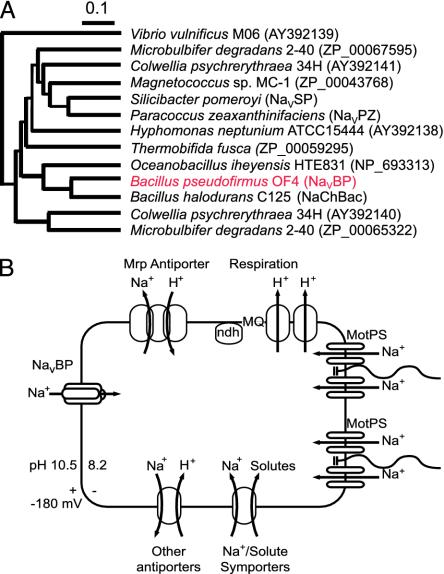Fig. 1.
The place of NaVBP in the NaVBac superfamily and its potential participation in the Na+ cycle of alkaliphilic B. pseudofirmus OF4. (A) Phylogenic tree of bacterial NaChBac homologues. A multiple alignment was calculated by using the clustalw program (http://clustalw.genome.jp). The tree was then generated by using the neighbor-joining method (Njplot) (4). Branch lengths are proportional to the sequence divergence and can be measured relative to the bar shown (Bar = 0.1 substitution per amino acid site). The GenBank accession numbers are indicated in parentheses. (B) Schematic diagram of the Na+ cycle of alkaliphilic B. pseudofirmus OF4. Na+/H+ antiporters, particularly the Mrp antiporter depicted here (10), catalyze net proton accumulation in the cytoplasm in cells that are extruding protons during respiration. Na+ reentry in support of pH homeostasis is achieved by Na+ :solute symporters (8). When Na+ entry is limiting, e.g., at low [Na+ ]ora paucity of symporter substrates, pH-activated Na+ channels are hypothesized to provide an important Na+ reentry path (7–9). Candidates for such channels are the NaVBP channel (1–3) and the MotPS channel (8).

